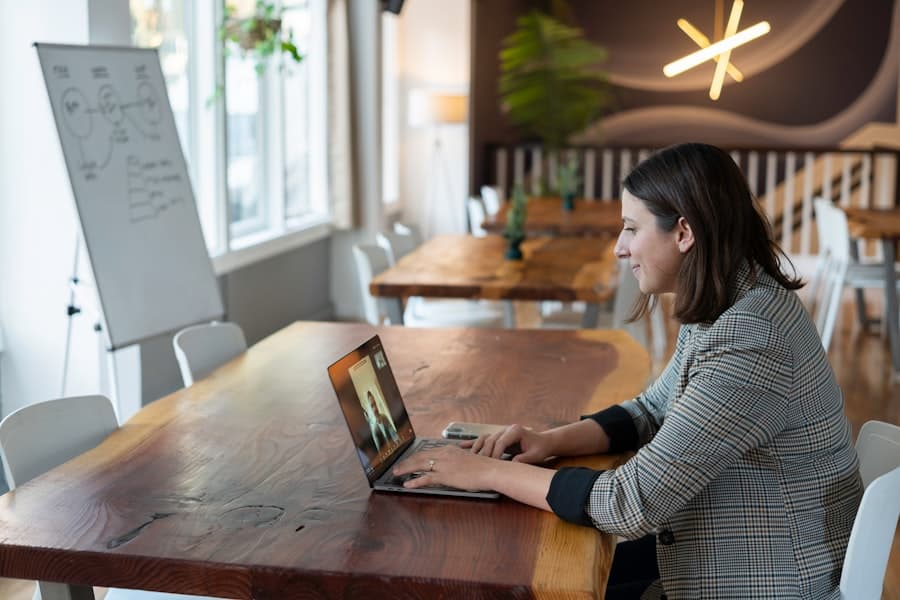In an increasingly interconnected world, the concept of education has evolved dramatically, transcending geographical boundaries and cultural barriers. Virtual classrooms have emerged as a powerful tool in this transformation, enabling learners from diverse backgrounds to engage in educational experiences that were once limited by physical location. These digital learning environments facilitate not only academic instruction but also serve as platforms for global cultural exchange programs.
By leveraging technology, educators can create immersive experiences that foster understanding and appreciation of different cultures, ultimately enriching the learning journey for all participants. Global cultural exchange programs have long been recognized for their ability to promote cross-cultural understanding and collaboration.
However, the advent of virtual classrooms has revolutionized this paradigm, allowing students and educators to connect in real-time, regardless of their physical locations. This shift not only democratizes access to cultural exchange opportunities but also enhances the educational experience by incorporating diverse perspectives and insights from around the world. As we delve deeper into the benefits and implications of virtual classrooms in global cultural exchange programs, it becomes evident that this innovative approach is reshaping the landscape of education.
Key Takeaways
- Virtual classrooms provide a platform for global cultural exchange programs to connect students from different parts of the world.
- The benefits of virtual classrooms for global cultural exchange programs include increased access to diverse perspectives and the opportunity for students to develop cross-cultural communication skills.
- Virtual classrooms facilitate language learning and communication by providing interactive tools and resources for students to engage with language and cultural content.
- Virtual classrooms play a crucial role in promoting intercultural understanding and awareness by creating opportunities for students to interact with peers from different cultural backgrounds.
- The use of virtual classrooms in collaborative projects and cross-cultural partnerships allows students to work together on shared goals and develop a deeper understanding of each other’s cultures.
The Benefits of Virtual Classrooms for Global Cultural Exchange Programs
Breaking Down Geographical Barriers
Students from around the world can now participate in collaborative learning experiences without the need for travel, which can be costly and time-consuming. This increased accessibility allows for a richer cultural exchange, as learners can share their unique backgrounds and experiences in a shared digital space.
Fostering Flexibility in Learning
Virtual classrooms offer flexibility in learning, unlike traditional classroom settings that adhere to rigid schedules. Online platforms allow participants to engage at their own pace and convenience, making it ideal for students in different time zones or those balancing other commitments.
Enhancing Engagement and Commitment
This flexibility not only enhances engagement but also encourages a more profound commitment to the learning process. Students can immerse themselves in discussions and activities that resonate with their interests and schedules, leading to a more meaningful and impactful learning experience.
How Virtual Classrooms Facilitate Language Learning and Communication
Language acquisition is a critical component of cultural exchange, and virtual classrooms provide an ideal environment for enhancing language skills through real-time interaction. In these digital spaces, students can practice speaking, listening, reading, and writing in a foreign language while engaging with native speakers or fellow learners. For instance, a virtual classroom might host a language exchange program where students from Spain and the United States collaborate on projects while practicing each other’s languages.
This immersive experience not only improves language proficiency but also builds confidence in communication skills. Additionally, virtual classrooms often incorporate various multimedia resources that cater to different learning styles. Video conferencing tools enable face-to-face interactions, while discussion boards and chat features allow for asynchronous communication.
This variety of communication methods encourages students to express themselves in multiple ways, reinforcing their language skills. For example, a student may initially feel hesitant to speak during live discussions but can gain confidence by participating in written exchanges on discussion forums. This multifaceted approach to language learning fosters a supportive environment where students can develop their skills at their own pace while benefiting from peer feedback.
The Role of Virtual Classrooms in Promoting Intercultural Understanding and Awareness
Virtual classrooms serve as vital platforms for promoting intercultural understanding and awareness among students from diverse backgrounds. By engaging in discussions about cultural norms, values, and traditions, learners can gain insights into perspectives that differ from their own. For instance, a virtual classroom focused on global citizenship might encourage students to share their cultural practices during festivals or holidays, fostering appreciation for diversity and commonality alike.
Such exchanges not only enrich students’ knowledge but also challenge stereotypes and misconceptions that may exist about different cultures. Furthermore, virtual classrooms often facilitate collaborative projects that require students to work together towards common goals. These projects can range from research initiatives to community service endeavors that address global issues such as climate change or social justice.
By collaborating with peers from different cultural backgrounds, students learn to navigate differences in communication styles, problem-solving approaches, and teamwork dynamics. This experiential learning fosters empathy and respect for diverse viewpoints, ultimately contributing to a more inclusive global community.
The Use of Virtual Classrooms in Collaborative Projects and Cross-Cultural Partnerships
Collaborative projects within virtual classrooms exemplify the potential for cross-cultural partnerships that transcend traditional educational boundaries. These projects often involve students working together on shared objectives, such as creating presentations or conducting research on specific topics. For example, a group of students from various countries might collaborate on a documentary about climate change impacts in their respective regions.
Each participant brings unique insights based on their local context, resulting in a comprehensive understanding of the issue from multiple angles. Moreover, virtual classrooms enable educators to establish partnerships with institutions around the world, further enriching the collaborative experience for students. Schools can connect with organizations or universities in different countries to create joint programs that promote cultural exchange through shared curricula or projects.
For instance, a partnership between a school in Kenya and one in Canada could lead to joint initiatives focused on sustainable development, allowing students to learn from each other’s experiences while working towards common goals.
Overcoming Challenges and Barriers in Virtual Cultural Exchange Programs
While virtual classrooms offer numerous benefits for global cultural exchange programs, they are not without challenges. One significant barrier is the digital divide that exists between different regions of the world. Access to reliable internet connectivity and technological resources can vary greatly, limiting participation for some students.
For instance, learners in rural areas may struggle with slow internet speeds or lack access to necessary devices, hindering their ability to engage fully in virtual classrooms. Additionally, cultural differences can pose challenges in communication styles and expectations within virtual environments. Students may come from backgrounds where direct communication is valued differently than in other cultures, leading to misunderstandings or discomfort during discussions.
Educators must be mindful of these differences and create inclusive environments that encourage open dialogue while respecting diverse perspectives. Implementing training sessions on intercultural communication for both educators and students can help mitigate these challenges by fostering awareness and understanding of varying communication norms.
Best Practices and Strategies for Implementing Virtual Classrooms in Global Cultural Exchange Programs
To maximize the effectiveness of virtual classrooms in global cultural exchange programs, educators should adopt best practices that promote engagement and inclusivity. One effective strategy is to establish clear objectives for each program or project, ensuring that all participants understand the goals and expected outcomes. This clarity helps guide discussions and activities while fostering a sense of purpose among learners.
Incorporating interactive elements into virtual classrooms is another essential practice. Utilizing tools such as polls, breakout rooms for small group discussions, and multimedia presentations can enhance engagement and encourage active participation. For example, educators might use breakout rooms during a discussion on cultural traditions to allow smaller groups to share their experiences before reconvening for a larger conversation.
This approach not only fosters collaboration but also ensures that all voices are heard. Additionally, providing ongoing support and resources for students is crucial for successful implementation. Educators should offer guidance on navigating technology platforms and encourage peer mentorship within the classroom.
Creating opportunities for informal interactions outside of structured activities—such as virtual coffee breaks or cultural sharing sessions—can further strengthen relationships among participants and enhance the overall experience.
The Future of Virtual Classrooms in Supporting Global Cultural Exchange Programs
As technology continues to advance at an unprecedented pace, the future of virtual classrooms in supporting global cultural exchange programs appears promising. Innovations such as augmented reality (AR) and virtual reality (VR) have the potential to create even more immersive learning experiences that transcend traditional boundaries. Imagine students being able to virtually visit historical sites or participate in cultural festivals from their homes—these technologies could revolutionize how learners engage with different cultures.
Moreover, as educational institutions increasingly recognize the value of global citizenship education, there will likely be a growing emphasis on integrating virtual classrooms into curricula worldwide. This shift could lead to more structured programs that prioritize intercultural understanding as a core component of education. By fostering partnerships between schools across continents and encouraging collaborative projects that address global challenges, educators can prepare students to thrive in an interconnected world.
In conclusion, the evolution of virtual classrooms has opened new avenues for global cultural exchange programs that were previously unimaginable. By harnessing technology’s power to connect learners across borders, we can cultivate a generation equipped with the skills and understanding necessary to navigate an increasingly complex global landscape. The potential for growth and innovation within this realm is vast, promising exciting developments for future educational endeavors.
One related article that explores the latest consumer technology breakthroughs is CNET Tracks All the Latest Consumer Technology Breakthroughs. This article delves into how advancements in technology can enhance virtual classrooms and support global cultural exchange programs. By staying up to date on the latest tech trends, educators can create more engaging and interactive virtual learning environments that facilitate cross-cultural communication and understanding.
FAQs
What are virtual classrooms?
Virtual classrooms are online learning environments that allow students and teachers to interact in real time through video conferencing, chat, and other digital tools.
How do virtual classrooms support global cultural exchange programs?
Virtual classrooms provide a platform for students from different countries to connect and learn from each other’s cultures. They can participate in language exchanges, virtual field trips, and collaborative projects that promote cross-cultural understanding.
What are the benefits of using virtual classrooms for global cultural exchange programs?
Some benefits of using virtual classrooms for global cultural exchange programs include increased access to diverse perspectives, the ability to connect with students from around the world, and the opportunity to develop digital literacy and communication skills.
What types of activities can be conducted in virtual classrooms to support global cultural exchange programs?
Activities in virtual classrooms for global cultural exchange programs can include virtual language lessons, cultural presentations, collaborative projects, and discussions on global issues. These activities help students develop empathy, intercultural communication skills, and a broader worldview.
How can virtual classrooms help break down cultural barriers in global cultural exchange programs?
Virtual classrooms provide a neutral and inclusive space for students to interact, learn, and collaborate regardless of their cultural backgrounds. This can help break down stereotypes, promote empathy, and foster a sense of global citizenship among participants.



